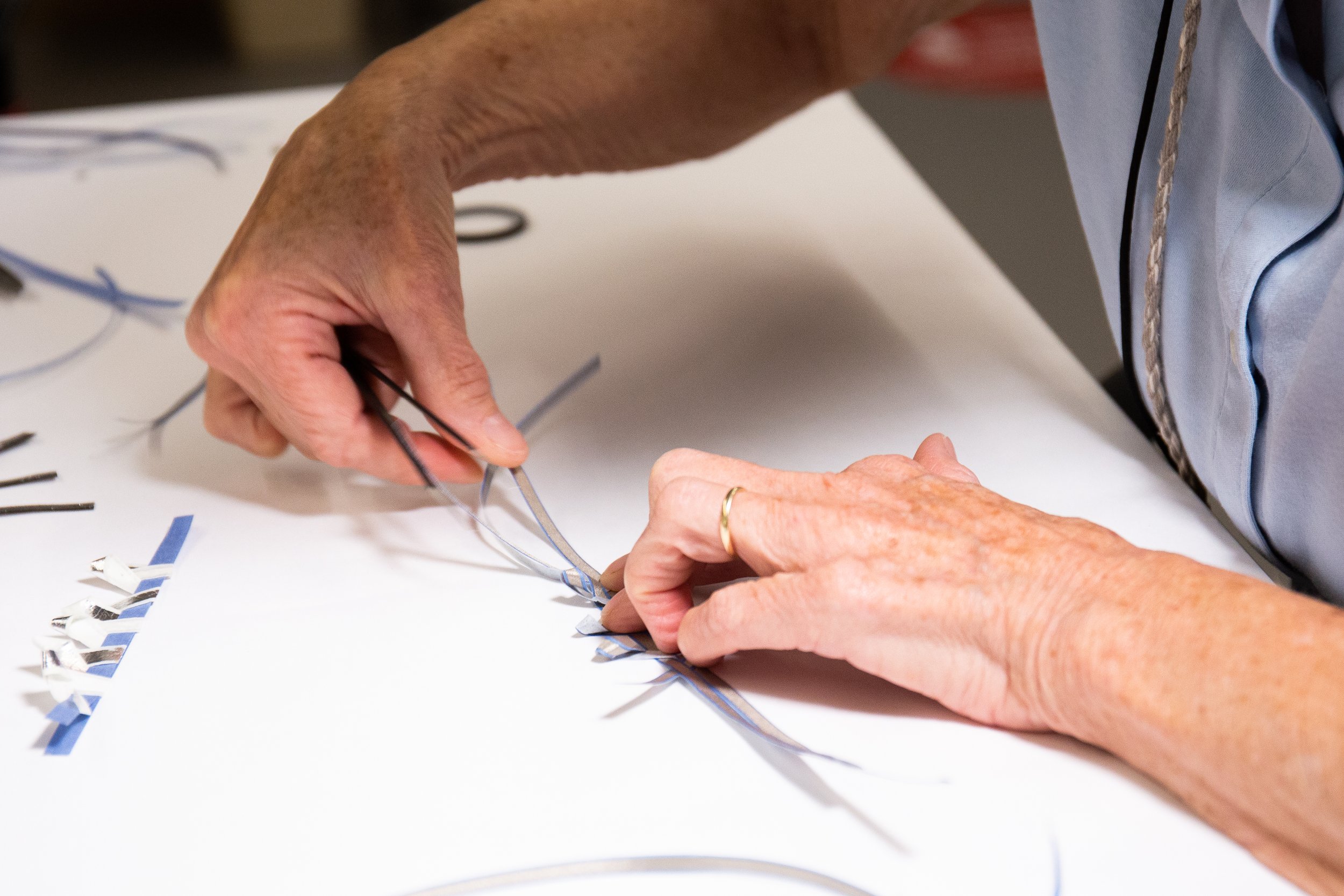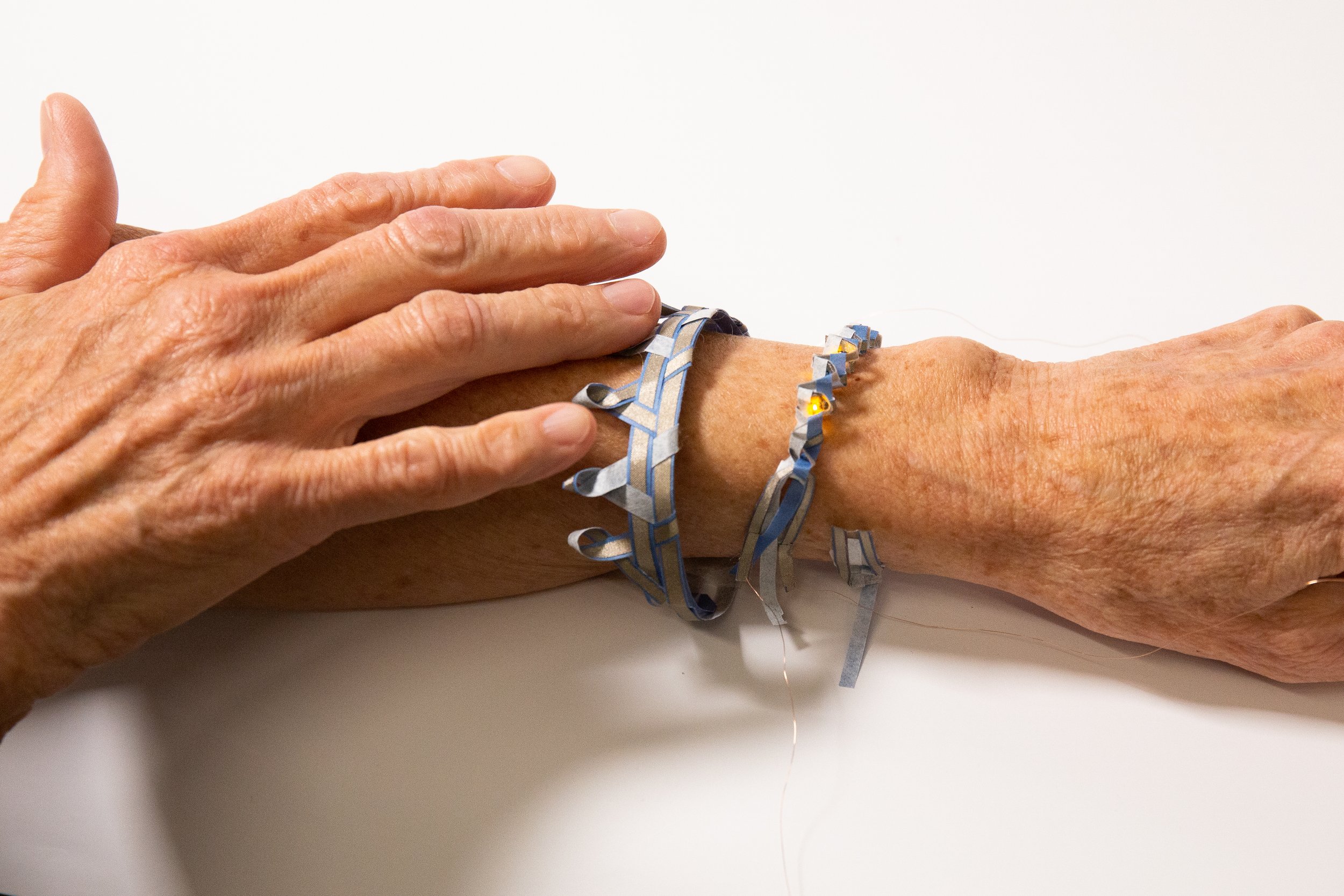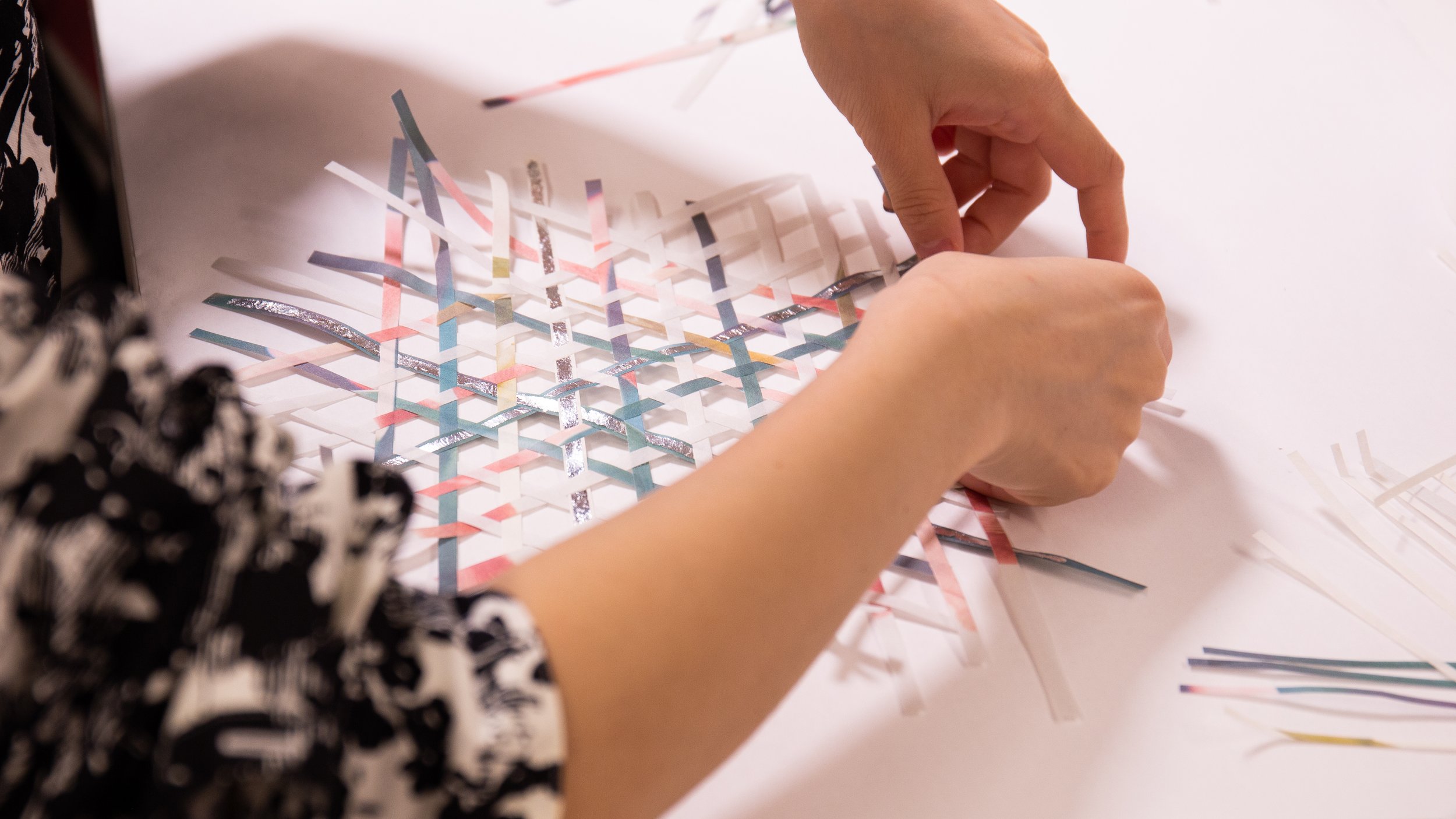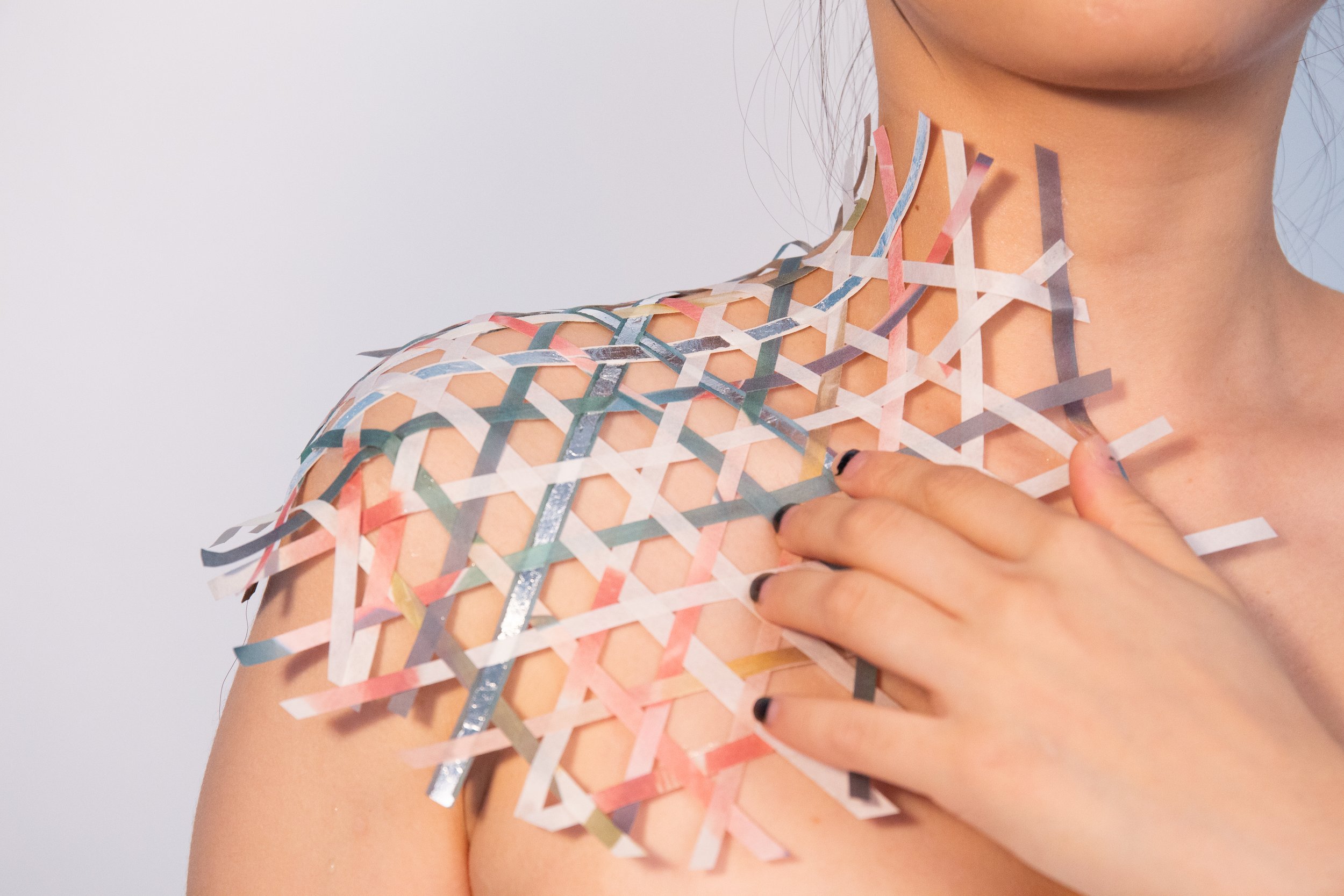SkinPaper
Exploring Opportunities for Woven Paper as a Wearable Material for On-Skin Interactions
Paper circuitry has been extensively explored by HCI researchers as a means of creating interactive objects. However, these approaches focus on creating desktop or handheld objects, and paper as a wearable material remains under-explored. We present SkinPaper, a fabrication approach using silicone-treated washi paper to weave lightweight and easy-to-fabricate on-skin interactions. We adopt techniques from paper weaving and basketry weaving practices to create paper-woven structures that can conform to the body. Our approach uses off-the-shelf materials to facilitate a highly customizable fabrication process. We showcase eight case studies to illustrate our approach’s two to three-dimensional forms. To understand the expressiveness of the design space, we conducted a workshop study in which weavers created paper-woven on-skin interactions. We draw insights from the studies to understand the opportunities for paper-woven on-skin interactions.
Keywords: on-skin interfaces, wearable computing, paper circuitry
Project Credits: Jingwen Zhu, Nadine El Nesr, Nola Rettenmaier, and Cindy Hsin-Liu Kao
Publication: 2023 CHI Conference on Human Factors in Computing Systems (CHI ’23) PDF | DOI | Project Page
Case Studies
We present a total of 8 case studies generated through our research through design methodology to explore design opportunities for paper-based on-skin interfaces. These explorations offer insights into the creative capabilities of the SkinPaper design space, providing generalizable design solutions for future SkinPaper applications. We present case studies of each paper weaving structural dimension: first examining three case studies of 2D patterns, three case studies of 2.5D textures, and two studies of 3D structures that can directly envelop body locations.
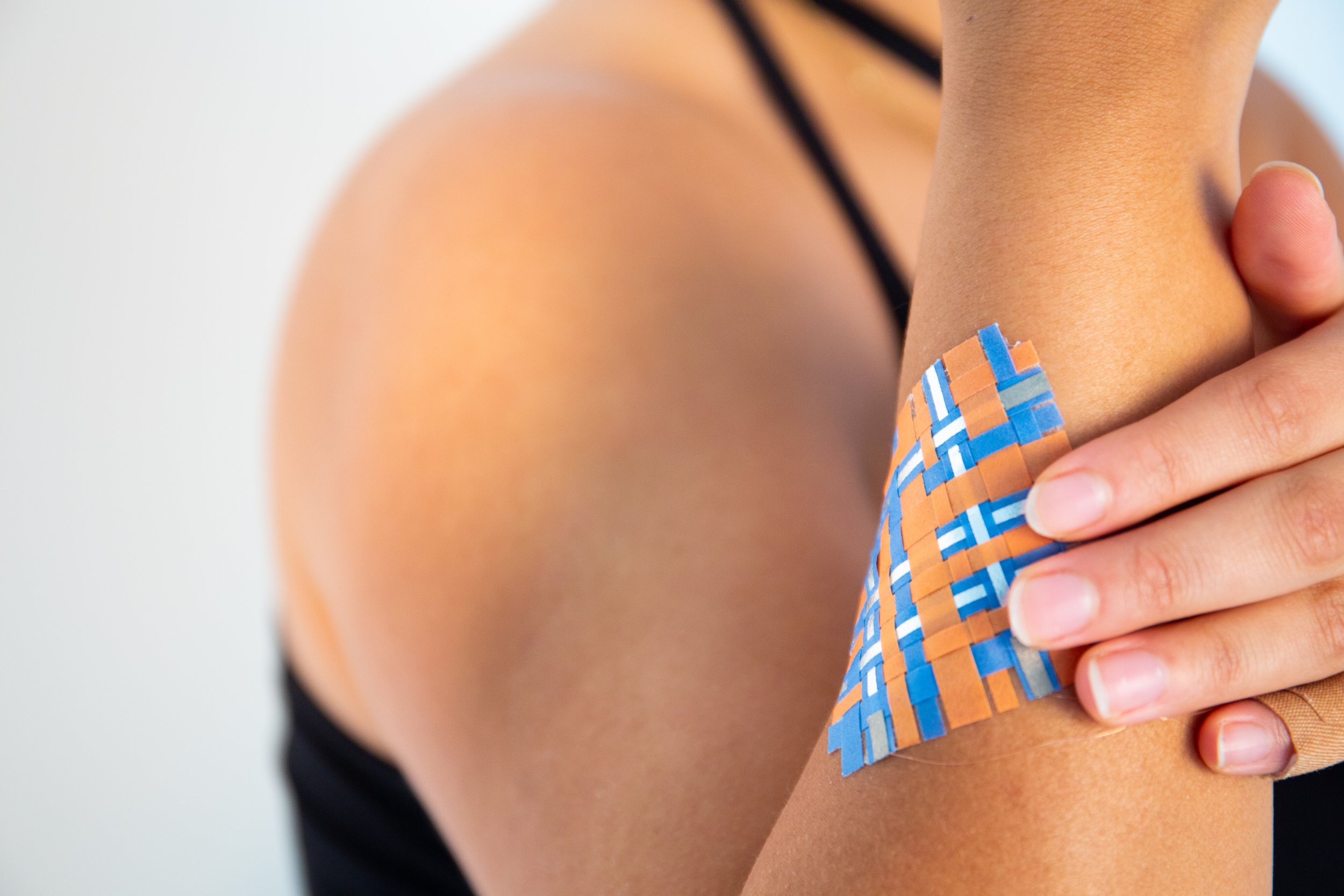
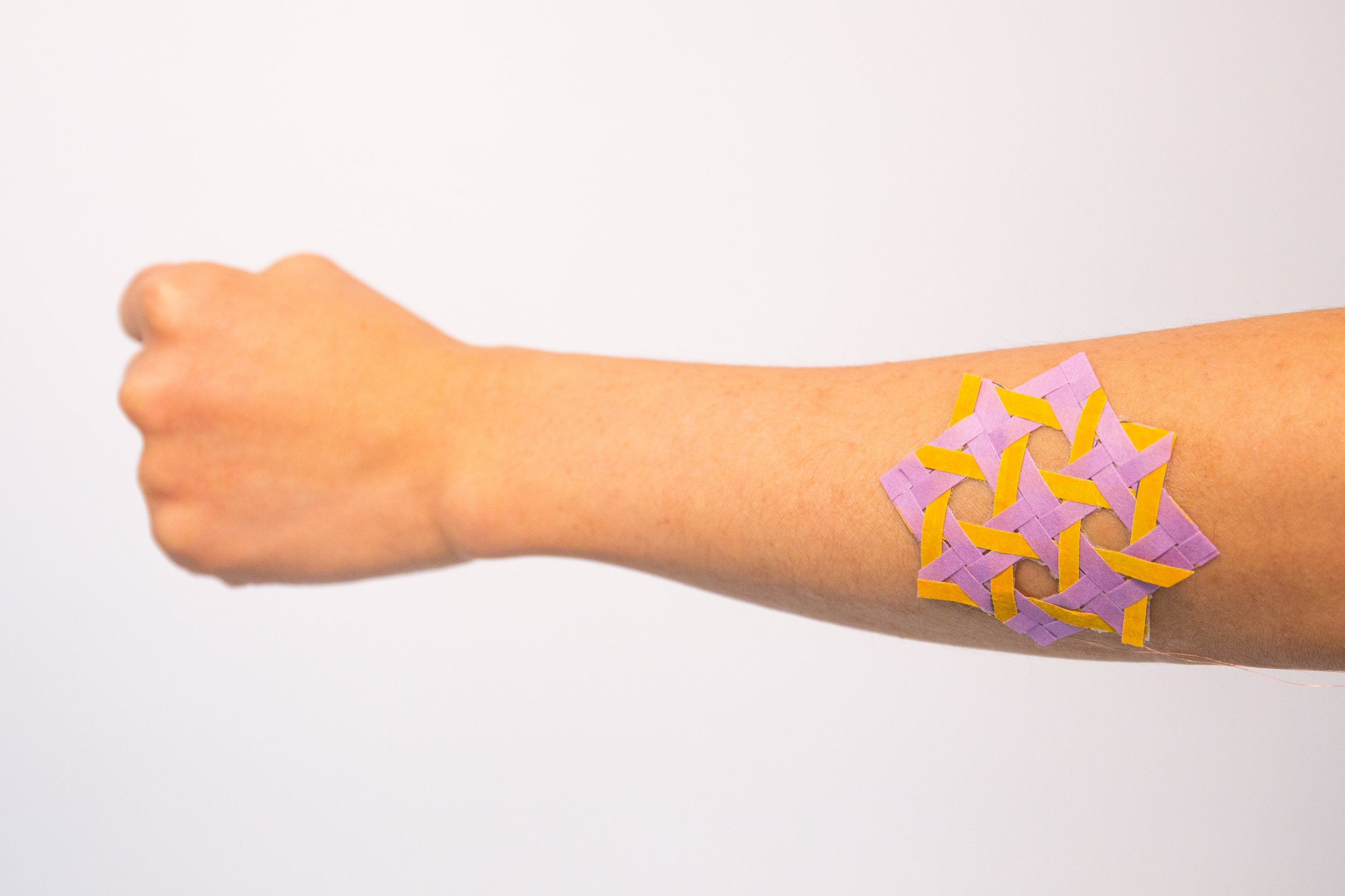
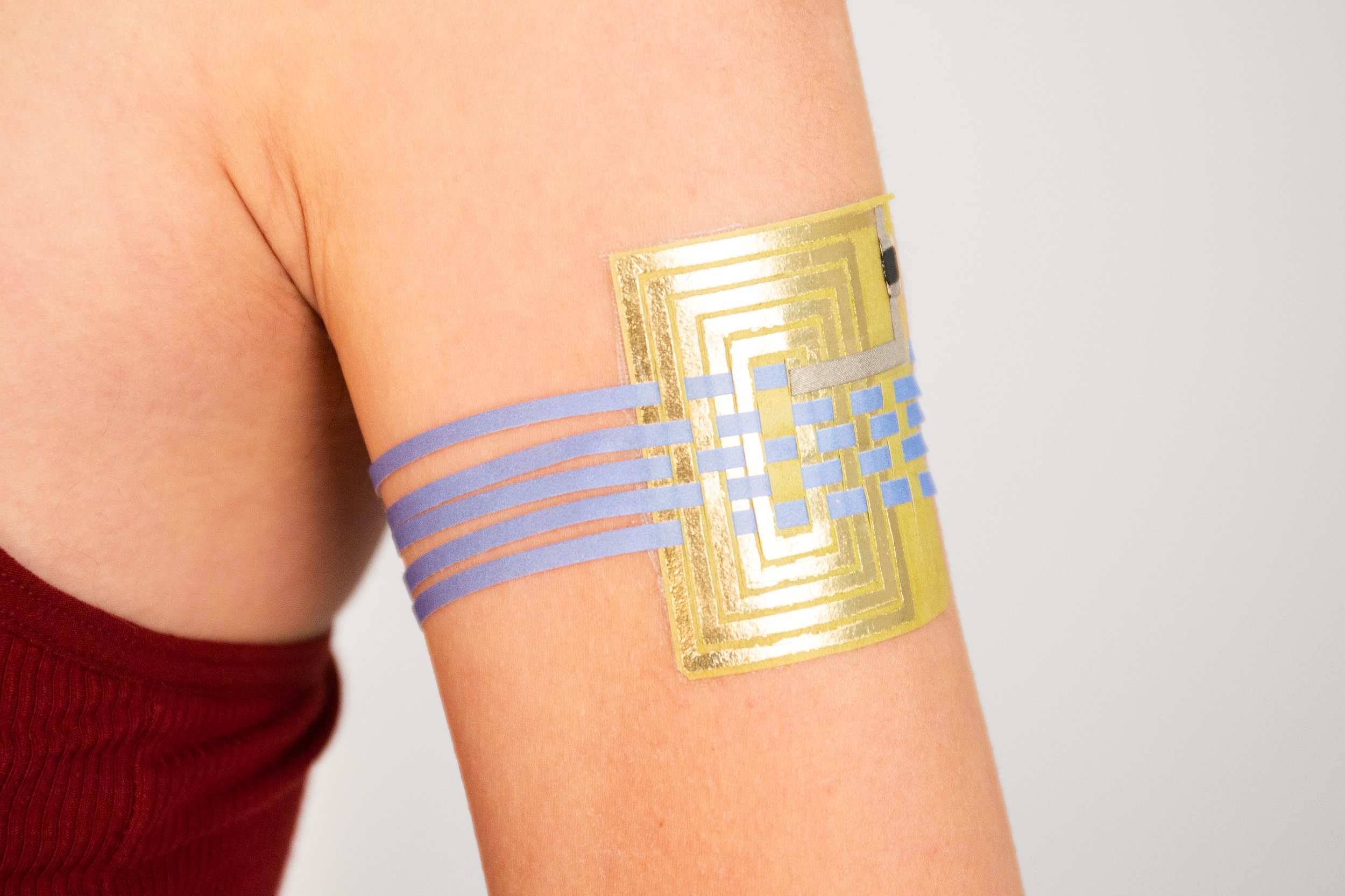
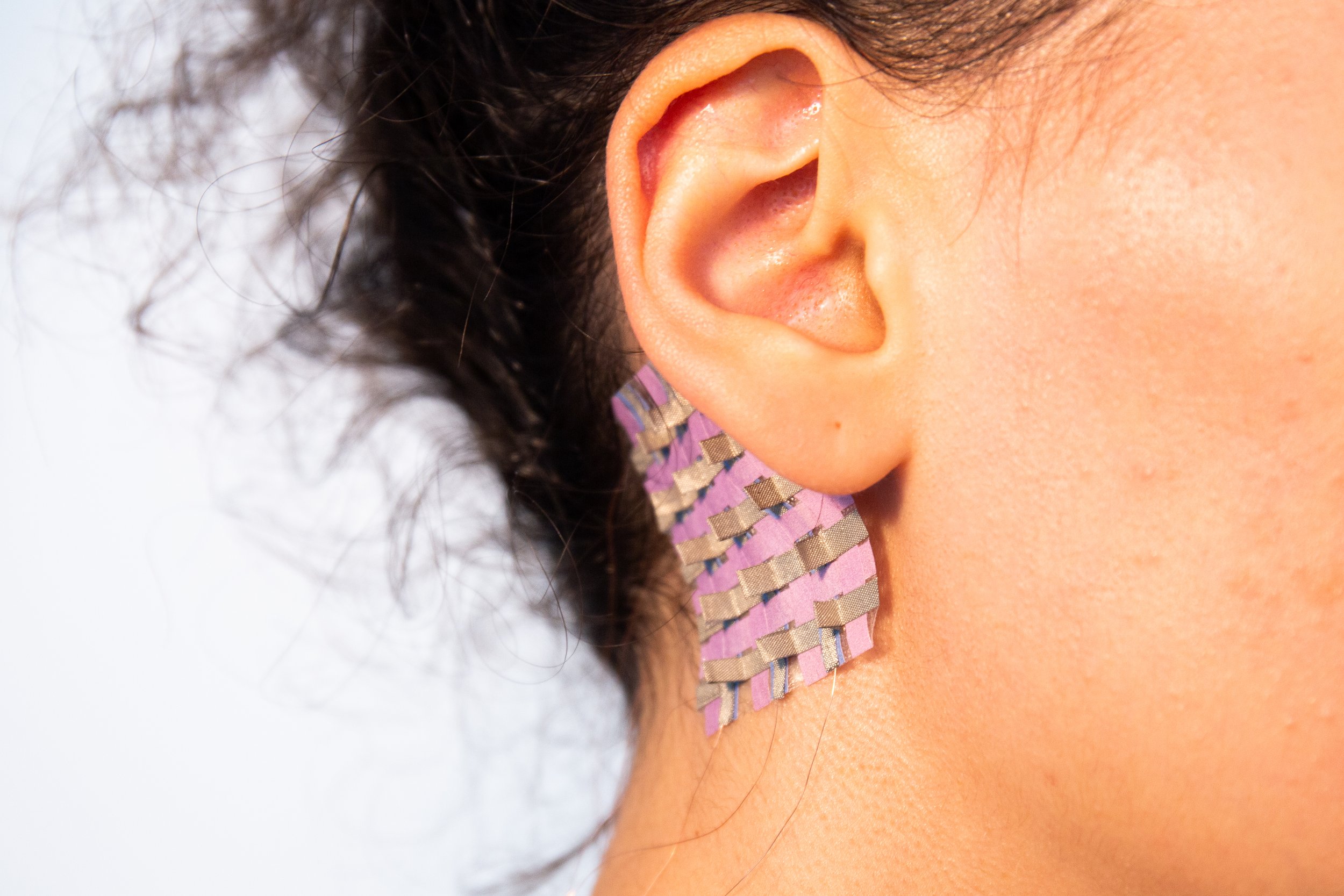
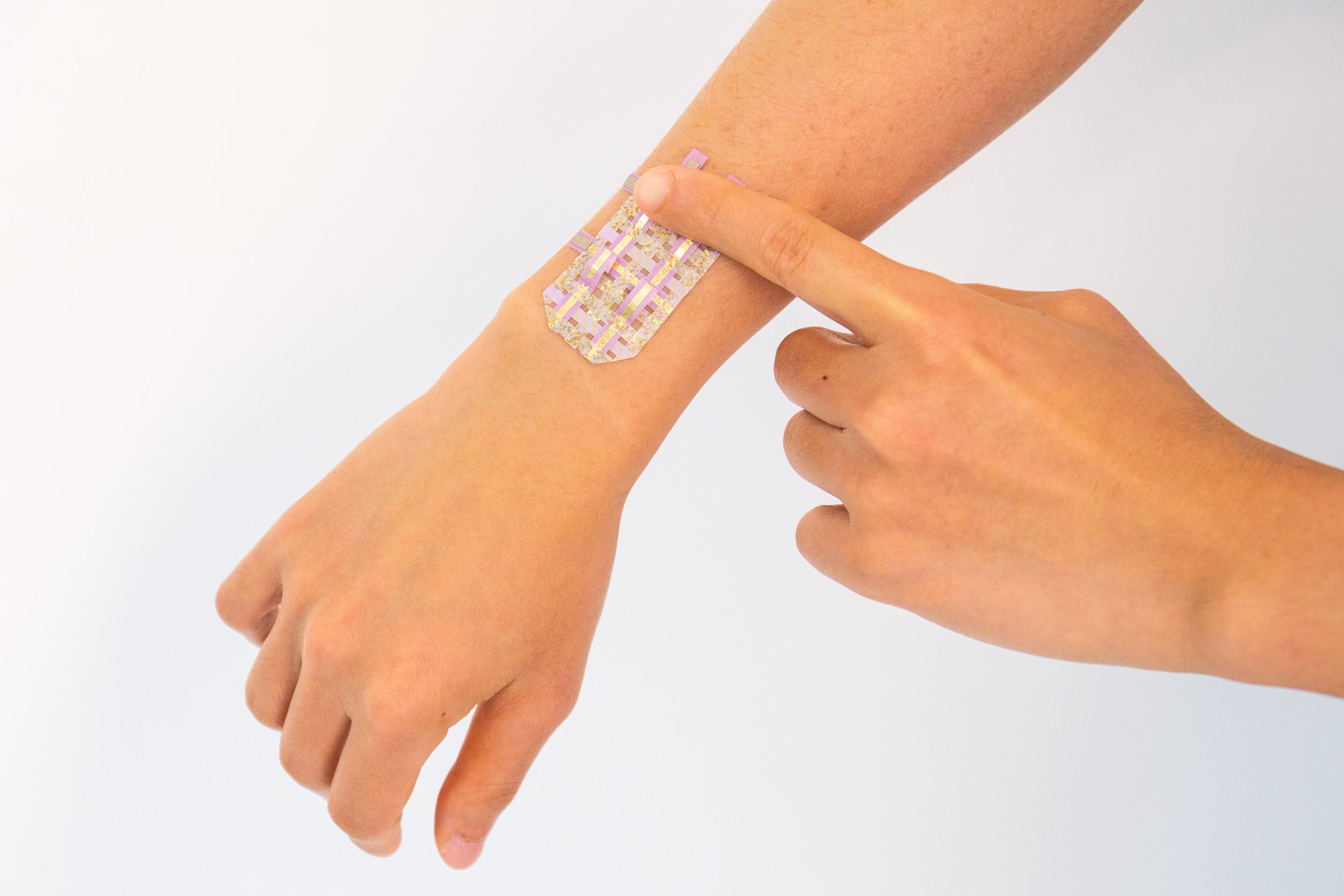

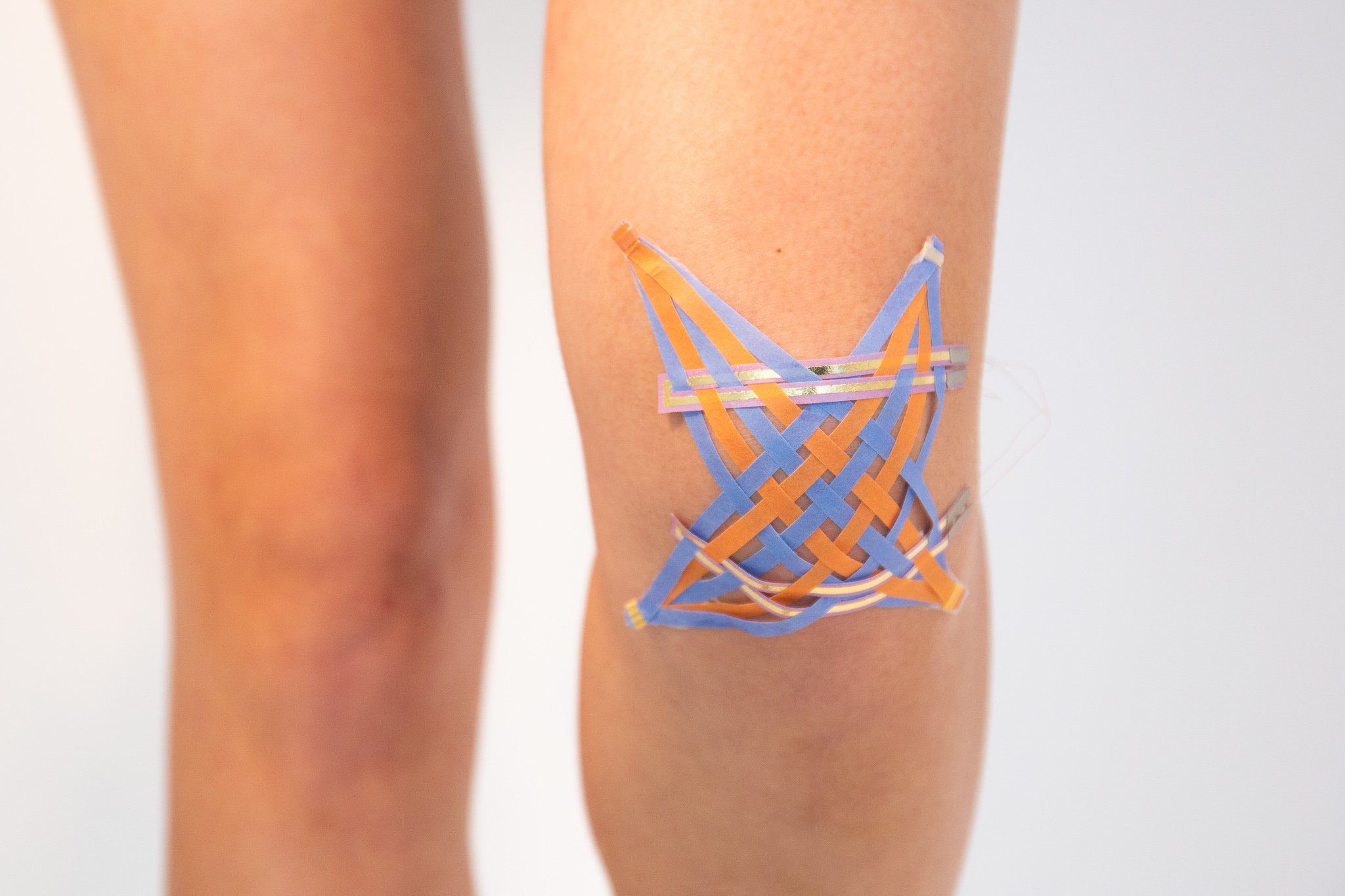
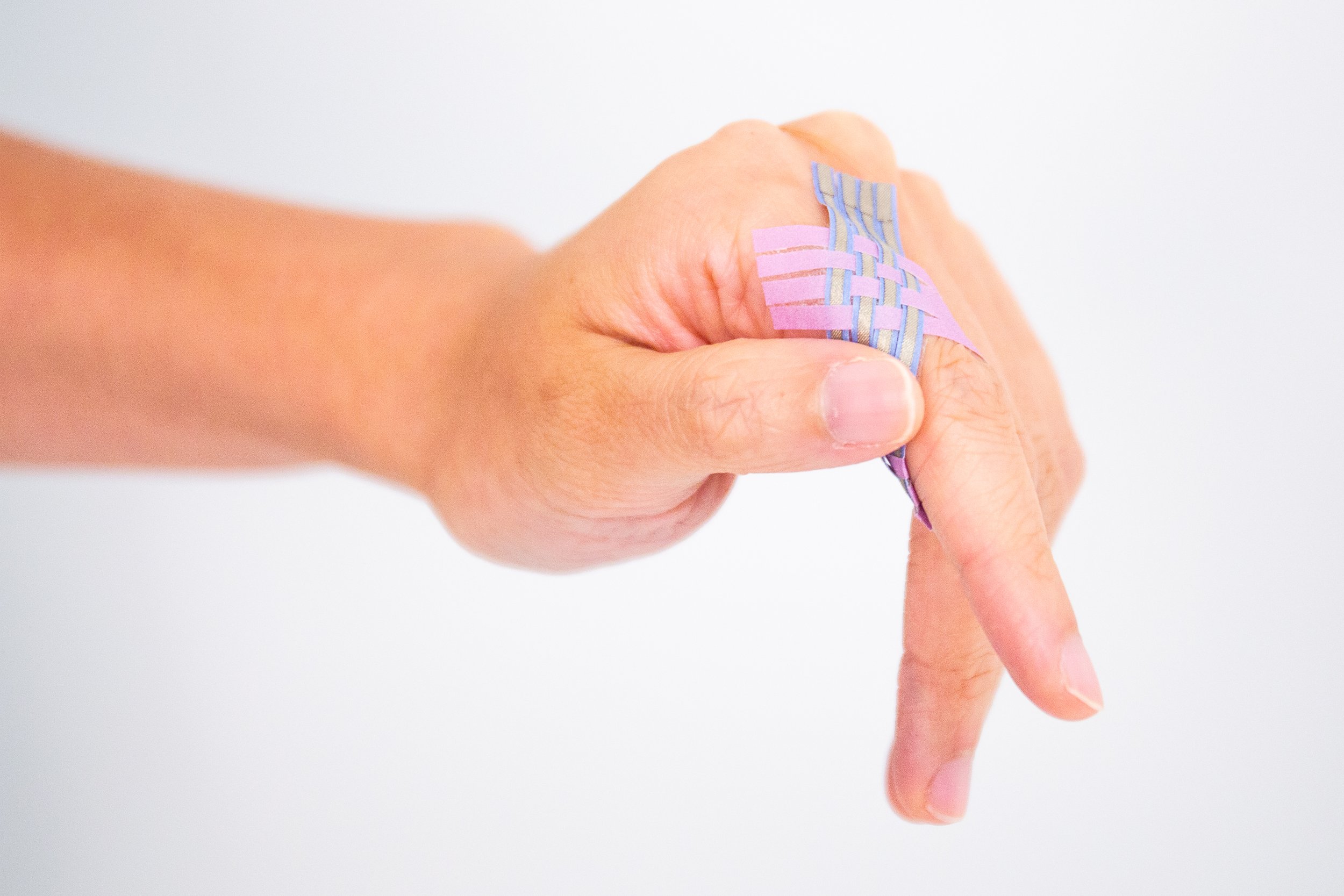
Workshop Studies
We conducted a design workshop study with four participants to understand end-users’ iterative design process from low- to high-fidelity prototyping. We aim to observe the feasibility of rapidly creating a low-fidelity prototype using SkinPaper, to the "high ceiling" and "wide walls" potential of SkinPaper’s design affordance. We also aim to discover how individuals with diverse weaving experiences adapt this new fabrication approach to their practices.

